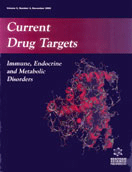Abstract
NKT cells emerge as important regulatory cells in autoimmune responses. Abnormalities in the numbers and functions of natural killer T (NKT) cells have been observed in patients with autoimmune diseases as well as in a variety of mouse strains that are genetically predisposed for development of autoimmune diseases. Unlike conventional T cells that recognize peptides in association with major histocompatibility complex (MHC), NKT cells recognize glycolipid antigens presented by the non-polymorphic MHC class I-like protein, CD1d. Recently, we and other groups have demonstrated that administration of glycolipid ligands such as a-galactosylceramide (α-GC ) or its sphingosine truncated derivative, OCH suppressed autoimmune diseases such as experimental autoimmune encephalomyelitis (EAE), diabetes in NOD mice and collagen-induced arthritis (CIA) by inducing T helper (Th) 2 bias of autoimmune T cells. OCH is a unique ligand to stimulate NKT cells to selectively produce Th2 cytokines whereas α-GC induces both interleukin (IL)-4 and interferon (IFN)-γ, and is more beneficial for treatment of a wide variety of Th1-mediated autoimmune diseases. The lack of polymorphism of CD1d and cross-reactive responses of mouse and human NKT cells to the same ligand indicates that targeting NKT cells with this ligand may be an attractive means for intervening in human autoimmune diseases such as type I diabetes (T1D), multiple sclerosis (MS) and rheumatoid arthritis (RA). The present review will focus on the potential roles of NKT cells in the pathogenesis of autoimmune diseases and the recent advances in glycolipid therapy for autoimmune disease models. The molecular mechanism of OCH-induced Th2- selective cytokine secretion will also be discussed.
Keywords: nkt cell, cd, a-galactosylceramide, och, autoimmune disease, therapy



















